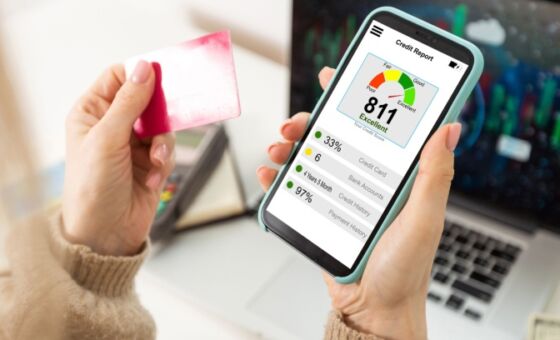If you are about to apply for a loan or a credit card, knowing if you are regarded as a reliable borrower can be helpful in predicting whether you’ll be successful in your application. By using a free credit score platform such as Credit Simple, you can generate your credit score.
What is Credit Simple?
Credit Simple is a company that lets you check your credit score for free and compares your score to others in your age bracket, gender and community. It also gives you insights and products based on your credit score and monitors your credit report so you are alerted when certain changes occur. Credit Simple is part of a group of companies that includes illion, one of the major credit reporting bureaus in Australia.
What’s the difference between a credit score and a credit report?
According to Credit Simple, your credit score is a number that indicates your ‘credit-worthiness’ and how likely you are to pay your bills on time. The higher the score, the better your credit rating. A credit report is a detailed history of your bill payments, defaults, court judgments and how much credit you have.
What is a good Credit Simple credit score?
Credit Simple uses a rating scale devised by illion, which ranges from 0 to 1,000, with a higher score indicating a healthier credit rating. Credit Simple also places you in one of six broader categories, which arranges the level of borrower from a zero score to an excellent score.
| 0 | 1-299 | 300-499 | 500-699 | 700-799 | 800-1,000 |
| Zero | Low | Room to improve | Average | Great | Excellent |
| Source: Credit Simple | |||||
Here’s a breakdown of what each category means, according to Credit Simple.
0
According to Credit Simple, people with a credit score of zero have something negative on their file, such as a default, a court judgment, summons or a bankruptcy. Credit Simple says that even just a combination of late repayments can result in a score of zero. You may also have a few credit enquiries on your file.
1-299
Credit Simple explains that if your score falls in this range, you most likely have payment defaults or other negative information on your file, such as late payments, bankruptcy or a high number of credit enquiries. You may also have some positive information on your file, such as paying your bills on time.
300-499
Just below average, which Credit Simple says doesn’t necessarily suggest anything too negative on your credit file, such as a default, missed repayments or judgment. Possibilities for scoring in this bracket could be that you are in a younger and more risky age bracket, or that you’ve recently applied for one or more smaller credit products or to credit providers with high-risk customers. Just 3% of Australians have a credit score in this range, Credit Simple says.
500-699
Being in Credit Simple’s average section could indicate there isn’t much information available on your credit history, or that your good history is yet to be reported by your current credit provider. Factors such as having a mortgage and consistently paying it off on time may push your number up. 23% of Australians fall into this credit score band, Credit Simple says.
700-799
If you fall in this section, Credit Simple says you most likely tend to pay your bills on time but might have several credit enquiries or applications to your name. You might also just be new to credit, meaning you haven’t had much time to demonstrate a positive repayment history. The majority of Australians (41%) have a credit score between 700 and 799, Credit Simple says.
800-1,000
Having a credit score this high will usually indicate an individual is in an older age bracket, is disciplined with credit applications, has a mortgage or investment property and meets the repayments as well as any bills consistently and on time. 22% of Australians have an excellent credit score, but only 3.5% of us have a perfect score of 1,000, according to Credit Simple.
How does Credit Simple calculate your credit score?
Credit Simple says information from banks, telcos, insurance providers and utility companies is used when calculating your credit score. Data such as how often you’ve applied for credit and whether you’ve had any court judgments or loan defaults in the past few years are among the many aspects that make up your credit score.
If you want to maintain or improve your score, there are a few ways to do this, such as paying your bills on time and paying off any existing debts. While there are ways to improve your score, Credit Simple also notes there are ways to decrease your score that you may be able to avoid, such as missing repayments.
Cover image source: NPFire/Shutterstock.com







